CSS-in-js
相关文章:
https://blog.csdn.net/u012961419/article/details/117216004
- 为什么会有 CSS-IN-JS CSS-IN-JS 是 WEB 项目中将 CSS 代码捆绑在 JavaScript 代码中的解决方案.
这种方案旨在解决 CSS 的局限性, 例如缺乏动态功能, 作用域和可移植性. 将css与js放在一起,方便组件移植,并且让其有自己的作用域,与VUE 中的 style 中的 scoped 作用一样。
- CSS-IN-JS 方案的优缺点 优点:
让 CSS 代码拥有独立的作用域, 阻止 CSS 代码泄露到组件外部, 防止样式冲突. 让组件更具可移植性, 实现开箱即用, 轻松创建松耦合的应用程序 让组件更具可重用性, 只需编写一次即可, 可以在任何地方运行. 不仅可以在同一应用程序中重用组件, 而且可以在使 用相同框架构建的其他应用程序中重用组件. 让样式具有动态功能, 可以将复杂的逻辑应用于样式规则, 如果要创建需要动态功能的复杂UI, 它是理想的解决方案. 缺点:
为项目增加了额外的复杂性. 自动生成的选择器大大降低了代码的可读性 推荐使用CSS-IN-JS方案
- Emotion 库 Emotion 是一个旨在使用 JavaScript 编写 CSS 样式的库. 实现 CSS-IN-JS 方案
3.1下载
npm install @emotion/core @emotion/styled
3.2使用方式 1、JSX Pragma
通知 babel, 不再需要将 jsx 语法转换为 React.createElement 方法, 而是需要转换为 jsx 方法.

/** @jsx jsx **/ //注释也要写
import { jsx } from '@emotion/core';
function App() {
return <div css={{ width: 200, height: 200 }}>lalal</div>
}2、 Babel Preset
npm run eject 使用其弹窗 react 配置 在 package.json 文件中找到 babel 属性, 加入如下内容
"presets":[
"react-app",
"@emotion/babel-preset-css-prop"
]之后便可在组件中直接使用css={}属性 推荐使用第二种方式
3.3 css方法
import { css } from '@emotion/core';
// 方式1 推荐
const style = css`
width: 100px;
background: skyblue;
`;
// 方式2
style = css({
width: 100,
background: 'skyblue'
})<div css={style}> App </div>3.4 css 属性优先级 props 对象中的 css 属性优先级高于组件内部的 css 属性. 在调用组件时可以在覆盖组件默认样式.
及外部优先级大于内部的
3.5 Styled Components 样式化组件 样式化组件就是用来构建用户界面的,是 emotion 库提供的另一种为元素添加样式的方式。
3.5.1 创建样式化组件 用法
import { styled } from '@emotion/styled';
const Conter = styled.div` //也可使用对象形式
width: 100px;
height: 100px;
`;
function App() {
return <div>
App works
<Conter/>
</div>;
}3.5.2 根据 props 属性覆盖样式
import { styled } from '@emotion/styled';
const Conter = styled.div` //也可使用对象形式
width: ${props => props.width || '100px'};
height: 100px;
`;
// ----------------------
const Conter = styled.div(props => ({ //对象形式
width: props && props.width || '100px',
height: '100px'
)});
function App() {
return <div>
App works
<Conter width={100}/>
</div>;
}3.5.3 为任何组件添加样式
3.5.3 为任何组件添加样式
import { styled } from '@emotion/styled';
function Demo ({className}) {
return <div className={className}>Demo</div>
}
const Conter = styled(Demo)`
width: 100px;
height: 100px;
color: red;
`;
function App() {
return <div>
<Conter/>
</div>;
}3.5.4 通过父组件设置子组件样式
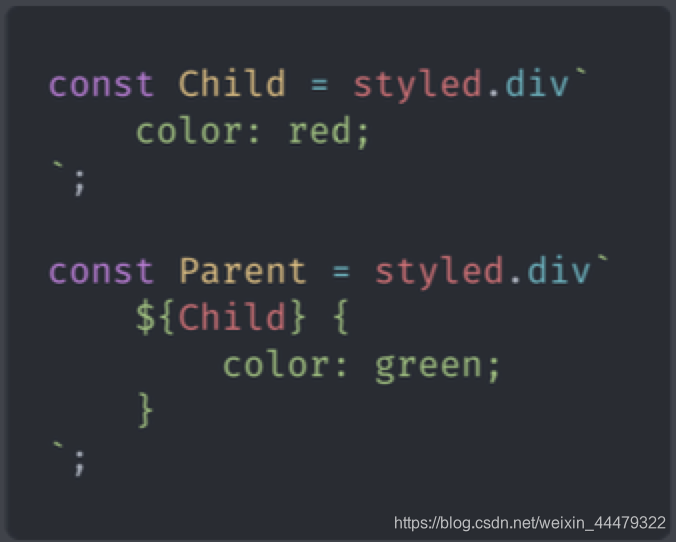
或者 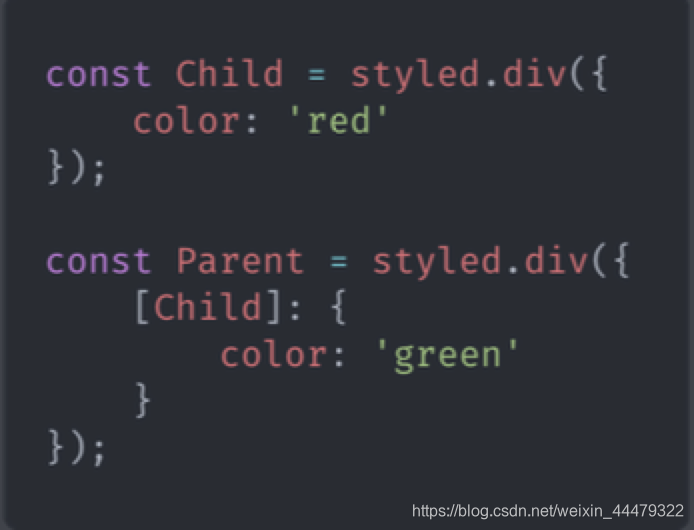
如果不生效 (需要 babel 插件支持) babel 插件配置
npm install babel-plugin-emotion
在 package.json 文件中找到 babel 属性, 加入如下内容:
"babel": {
"plugins": ["emotion"]
}3.5.5 嵌套选择器 & & 表示组件本身. 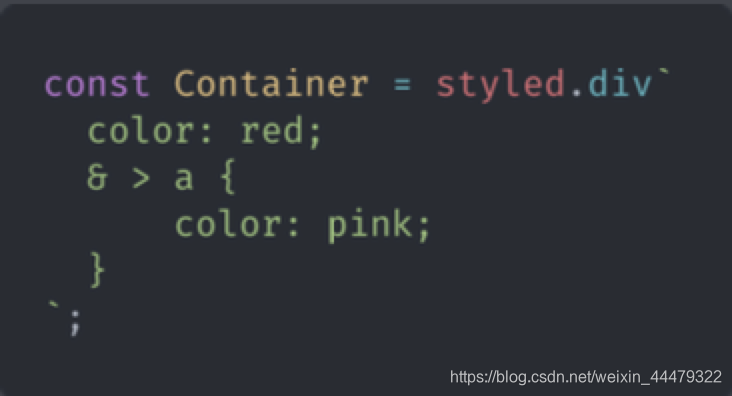
3.5.6 as 属性 要使用组件中的样式, 但要更改呈现的元素, 可以使用 as 属性.
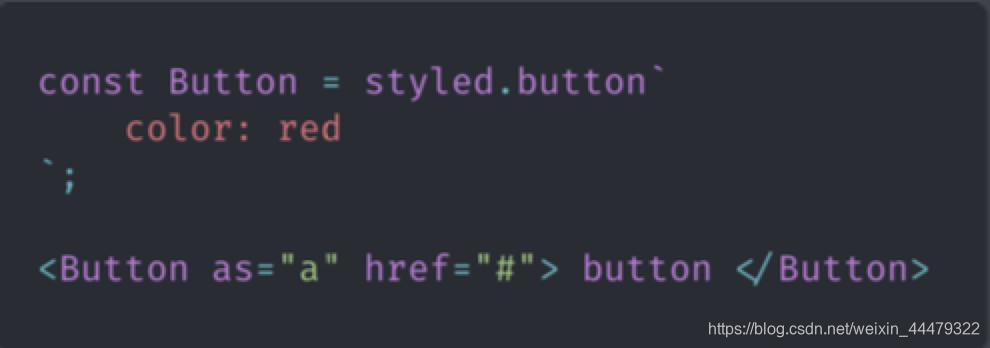
as 可以改变组件的标签;
3.6 样式组合
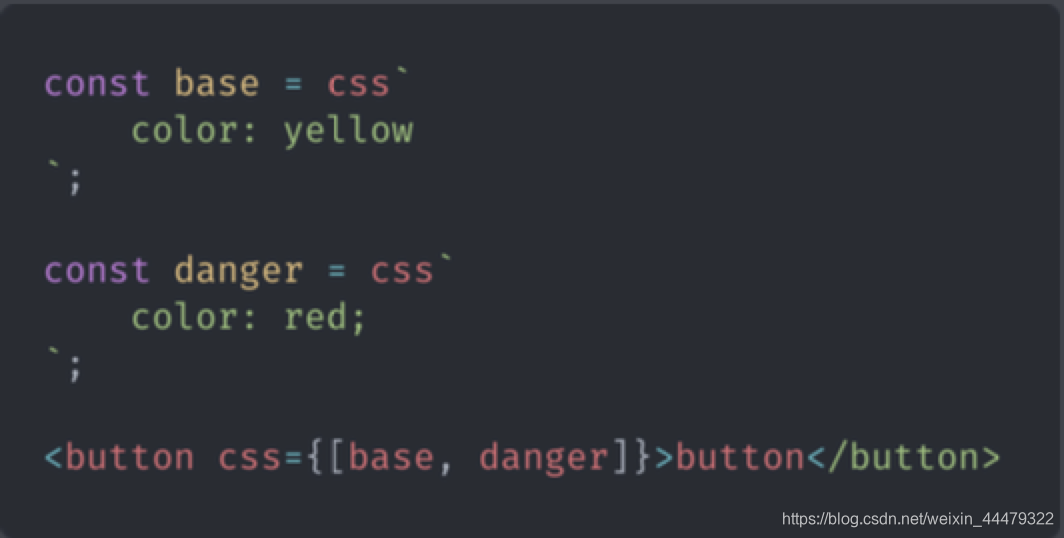
在样式组合中, 后调用的样式优先级高于先调用的样式. 后覆盖前的;
3.7 全局样式
引入 Global 组件
3.8 关键帧动画 引入 keyframes 组件
import { css, keyframes } from '@emotion/core';
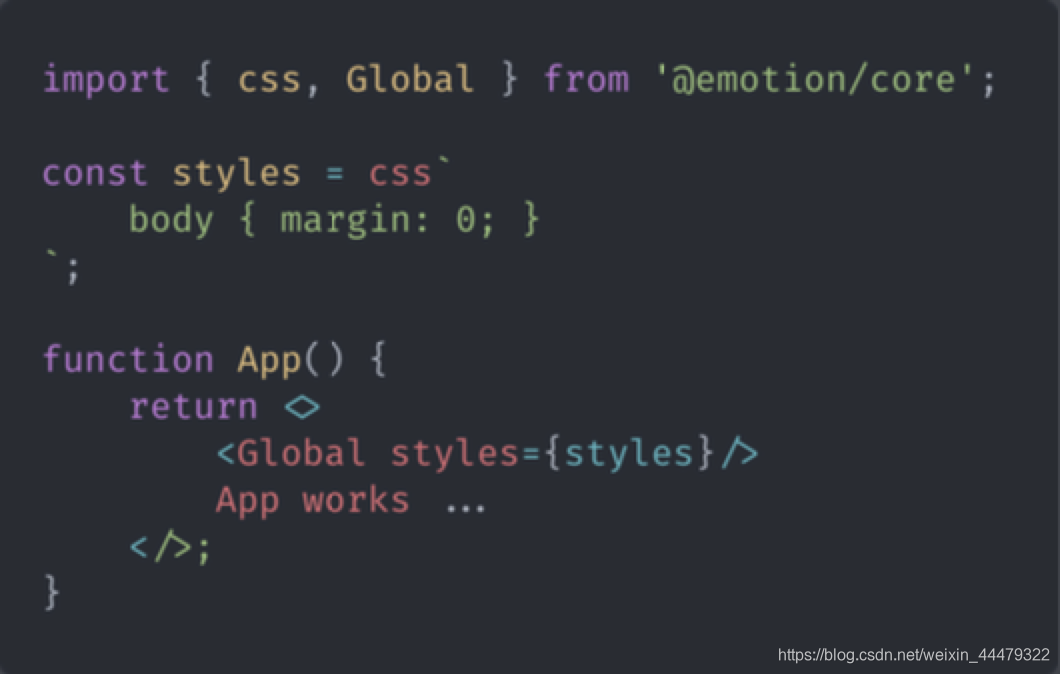
3.9 主题 下载主题模块
npm install emotion-theming
使用
// index.js
import React from 'react';
import ReactDOM from 'react-dom';
import App from './App';
// 引入 ThemeProvider 组件
import { ThemeProvider } from 'emotion-theming';
// 主题
const theme = {
colors: {
primary: 'tomato'
}
};
ReactDOM.render(
// 将 ThemeProvider 放置在视图在最外层
<ThemeProvider theme={theme}><App /></ThemeProvider>,
document.getElementById('root')
);// app.js
import React from 'react';
import { css, keyframes } from '@emotion/core';
import { styled } from '@emotion/styled';
import { useTheme } from 'emotion-theming';
// 获取主题
const primaryColor = props => css`
color: ${props.colors.primary}
`
function App() {
console.log(useTheme()); // 获取主题
return <div css={primaryColor}>
App works
<Conter/>
</div>;
}
export default App;